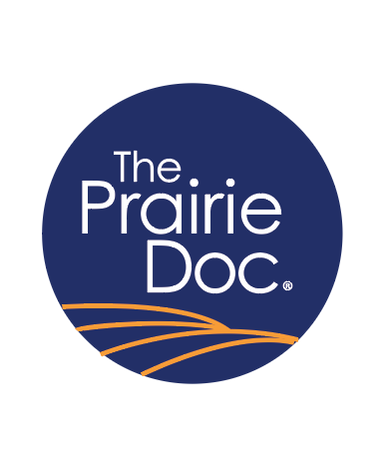|
by Richard P. Holm, MD
As a kid in country school, she ran faster than others, fell a lot, always picked herself up, and knee scabs were part of her story. Now in her 80s, she’s been falling again, especially after medications for a leaky bladder, blood pressure, and pain were started. Last night she fell in the bathroom, couldn’t get up, and remained there until the neighbor checked on her this afternoon. The hip was broken, and after repair and recovery time in the hospital, she moved to the nursing home. More than one-third of Americans older than 65 experience at least one fall, every year, with nearly two million of these people ending up in the emergency room. Once in the ER, 60% have a fracture of some kind, and 9% have head trauma. Falls in the elderly can cause many problems, most commonly fractured backs, wrists, hips and arms, as well as brain damage. The mean age of those visiting the ER for falls is 79, 76% are women, and more than 300,000 people with hip fractures need major surgery every year. These injuries cost our society billions of dollars every year, not to mention the physical and emotional cost to the individual who has to endure the pain and disability from an accident. Falls are caused in the elderly because of many reasons. Older people have slower reflexes, balance problems, reduced muscle strength, poorer vision, and are more often plagued by any generalized illness. Too often elderly people are not exercising or active, resulting in a softening of the skeletal structure and a higher risk for fracture. The risk of stumbling and falling increases in the presence of loose rugs, cluttered floors, poor lighting, exposed electrical or telephone cords, and stairs without handrails. Probably the most alterable risk factor is the medication list. More than 20% of people over 55 years of age are taking more than four prescription medications, and it only goes up with age. The worst fall inducing culprits include gabapentin-like meds, benzo-type sleeping/anxiety pills, digoxin, narcotics, diuretics, and meds for urinary incontinence, high blood pressure, heart, and prostate. Well-meaning care providers sometimes add meds to every new complaint and can forget to take away the old ones. Falling risks multiply with too many drugs! It is imperative that any patient or family member push the doctor for less, not more, meds. Pills can cause spills and broken hips. By Richard P. Holm, MD
Last night I walked in on my wife and daughter watching an old movie about the famous cook Julia Child and, from 50 years later, a young American woman trying to cook recipes from Child’s cookbook. The movie contrasted two wonderful characters struggling to master the art of French cooking, but I thought too little was presented about the food itself. If we were to contrast the difference between fine French cooking and typical American food, in general we could say it is mostly about quality versus quantity. The classic French haute cuisine, is pronounced “oat” like the grain you give to horses and “kwi-zeen” which rhymes with Holstein. Think haute cuisine and you envision small, almost dainty, courses of the freshest ingredients, with an emphasis on natural flavors, inventive pairings, a light sauce, a small glass of wine, and a tiny scoop of sorbet for dessert. Think classic American food and you see a large plate piled high with fried chicken, mashed potatoes with gravy, corn on the cob slathered in butter, a tall beer, and a large piece of apple pie with a scoop of ice cream for dessert. Or perhaps more typically you’d see a fast food double burger with bacon, large fries, a chocolate shake, and a deep fat fried apple fritter for dessert. You get the point. It’s not about French versus American, it’s about quality versus quantity… taste versus calories. To that end, many nutritional experts make the following recommendations: understand the calories in the food you eat, and aim for 1500 to 1800 for an average sized active woman and 2000 to 2400 for an average sized active man. Reduce those numbers by 300 to 500 if inactive or elderly. (College age athletes are in a category all by themselves.) Eat more non-starchy vegetables, all rich with vitamins, minerals, fiber, and almost-no-calories. A few examples: asparagus, cauliflower, lettuce, broccoli, onions, peppers, and tomatoes. Build muscles by eating the right proteins with the essential nine amino acids, like eggs, lean meats, fish, or combining peanut butter on whole wheat bread or rice with beans. Relegate to small defined quantities, or avoid altogether, the carbohydrates that drive us to eat more, like pasta, chips, white bread, desserts, and, dare I say, French-fried potatoes. Finally, eat enough fruit daily. Experts warn not to drink your fruit. Rather, eat it whole. Let’s make a new American Haute cuisine that’s about quality and not quantity. By Richard P. Holm, MD
We take a lot of things for granted. With the advent of antibiotics in the 1930s and 40s, we saw a true change in longevity and a reduction in premature death from infectious diseases. Now we are seeing deaths from bacteria which are resistant to every antibiotic and it’s not just the sick and decrepit who are affected. Recent studies show many more people are dying in the US from antibiotic resistant bacteria than from AIDS. It’s a real crisis from too much of a good thing. Resistance is due to excessive and overuse of antibiotics, which are often incorrectly seen as the cure for whatever ails us. The most glaring example is when antibiotics are given for what is obviously the common cold, making absolutely no difference in the course of the illness. Often I hear from the patient, “Why not start an antibiotic to keep this viral bronchitis from turning into pneumonia?” To that question I usually answer, “You are correct, when bacterial pneumonia occurs, it often follows a common cold, but studies show antibiotics don’t prevent that pneumonia following the cold. It just becomes a pneumonia resistant to treatment.” So why are we overusing antibiotics? Certainly an effective sales effort by the pharmaceutical industry is part of it, but what’s most to blame is patient or parent expectation. One study showed that 65% of the time children get antibiotics if the doctor perceives the parents expect them, but only 12% of the time when antibiotics are not expected, even when the children are similarly ill. Ultimately the doctor is responsible but too often influenced to provide unnecessary treatment. Another huge reason for growing antibiotic resistance results from their regular use in animal and poultry feed. Apparently this boosts growth and profits. Sometimes herds are even getting the newer broad spectrum antibiotics, which absolutely should be reserved for the care of sick individual animals, not the herd. The good news is that in countries where efforts to use less antibiotics are successful, then, over just a few years, antibiotics become effective again. So, there is something very important you can do. First, never push your doctor for an antibiotic. Make it clear you would be happy without the stuff unless it’s necessary. Second, please push your grocery store or your restaurant for antibiotic-free meat. If we are willing to pay a little more for antibiotic-free products, farmers will provide. Let’s not take antibiotics for granted. By avoiding the overuse of antibiotics, we can save ourselves from a real crisis. |
Archives
July 2024
Categories |
 RSS Feed
RSS Feed


